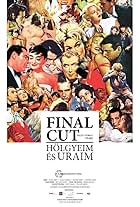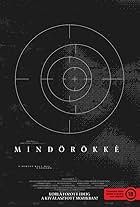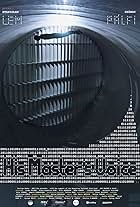Using almost no dialogue, the film follows a number of residents (both human and animal) of a small rural community in Hungary - an old man with hiccups, a shepherdess and her sheep, an old ... Read allUsing almost no dialogue, the film follows a number of residents (both human and animal) of a small rural community in Hungary - an old man with hiccups, a shepherdess and her sheep, an old woman who may or may not be up to no good, some folk-singers at a wedding, etc. While most... Read allUsing almost no dialogue, the film follows a number of residents (both human and animal) of a small rural community in Hungary - an old man with hiccups, a shepherdess and her sheep, an old woman who may or may not be up to no good, some folk-singers at a wedding, etc. While most of the film is a series of vignettes, there is a sinister and often barely perceptible su... Read all
- Awards
- 17 wins & 5 nominations total
- Rendõr
- (as József Forkas)
- Director
- Writer
- All cast & crew
- Production, box office & more at IMDbPro
Featured reviews
But we do have it. And it is enjoyable, clever, engaging. The notion here is one of granularity. I've written elsewhere about the size of the components in a film, that there are wonderful effects that can accrue when these are exploited. By that I meant component in several dimensions. There's the rhythm of the thing is how long the camera lingers and lines are spoken and effects presented. Mastery of this is rare but when you see it, it matters.
But there's granularity in the narrative as well. You might present chunks out of order, in which case the physical life of them is less important than the degree of abstraction in the way they are presented. Moving, shifting levels of abstraction only seems to work when the size of the brick, the steps in levels of abstraction, are constant. When these two bricks: abstraction in several senses and physical heartbeat are modulated together, then you have something that can penetrate your being.
Now to this. Its lovely. Its a slightly interesting puzzle that leaves us with a refreshing and welcome moral. Its offbeat and therefore attractive on that score as well. But I really didn't like it because there's no understanding of the bricks, the nature of the units that make up a film. This isn't me saying I like this tradition or convention, oh no. Its a matter of how our minds actually work.
Look at this seriously. Its difference from what we normally expect is part of its reason to be and presumably is there to increase its effectiveness at what it is. Small things like a bee's dance, or a bud's breaking are the same abstract "size" as larger things like planting and marrying, and they are the same "size" as global earthquakes and war. Placed in this is a mass murder of husbands, established also as the same size.
Its a nice idea. Wish it worked.
Interesting as all getout is the nature of the Hungarian mind. This is a small country. Many small countries in Europe, especially in the southeast, suffer an inferiority complex. Hungary is a bit different. They are ethnically different from other Europeans, profoundly so. They are a nation with one city surrounded by farms. So invested are they in this city that it is the most urban and in many ways sophisticated in Europe. Hungary given it size has produced a phenomenal number of brilliant scientists and mathematicians. Absolutely phenomenal.
And if you know these men and their work, you'll know that they are/were the primary warriors in defining the world geometrically. You don't want a treatise on warring theories in science in a movie comment, but be aware that there are different views of how things are put together in the world, and it boils down to how you abstract the bricks.
We owe the bright Hungarians for the notion that the world has symmetries that transcend numbers and probabilities. Mirrors exist before the eye does. If you go to Budapest, you will find great minds. But if you go to the outskirts and talk to the non-urbanites, you get a kindergarten version of geometric existence.
That's where this comes from. Its interesting. Its novel. Its ineffective and dumb. But pretty. Blocks, all the same.
Ted's Evaluation -- 2 of 3: Has some interesting elements.
At our showing of Hukkle at the SF International Film Festival, we were lucky enough to have the director present and he answered questions about the film. Though this film is fiction, the underlying occurences actually happened in a small village in Hungary in the 1900s.
Wonderful cinematography, beautiful scenery, unique sounds, and an original idea all contribute to making this film awe-inspiring.
Hukkle is kind of a symphony of sights and sounds, without any real dialogue. It's just rhythms and patterns and cause and effect, and it's very very cool. Often funny, often disturbing, always fascinating. It's sort of like a nature documentary, with humans as just one of the subjects, just one part of the ecosystem. And underneath it all, there's a strange murder mystery.
I saw this film as part of the Seattle International Film Festival. I hope it gets a wider release, because I'd like to see it again. I want to work out some of the details that I missed the first time through.
You have to have some patience to get really into the film, but afterward, it is really worth it. Lots of black humor about eating and being eaten. In fact, eating does not mean anything good in this film...
The morale of the story is well summarized in the closing folksong "Ki az urát nem szereti" (Who does not love her husband). The only time where words are used in this film to say something....
And yes: "Hukkle" does not mean anything on Hungarian, it is an onomatopoetic (sound-imitating) word that imitates the sound of a hickup. (The real Hungarian word for hickup is "csuklás".)
Storyline
Did you know
- TriviaThis is Hungary's first-ever film with a Dolby Digital soundtrack.
- How long is Hukkle?Powered by Alexa
Details
Box office
- Budget
- $100,000 (estimated)
- Gross US & Canada
- $53,715
- Gross worldwide
- $132,745
- Runtime1 hour 18 minutes
- Color
- Sound mix
- Aspect ratio
- 1.85 : 1
Contribute to this page


















